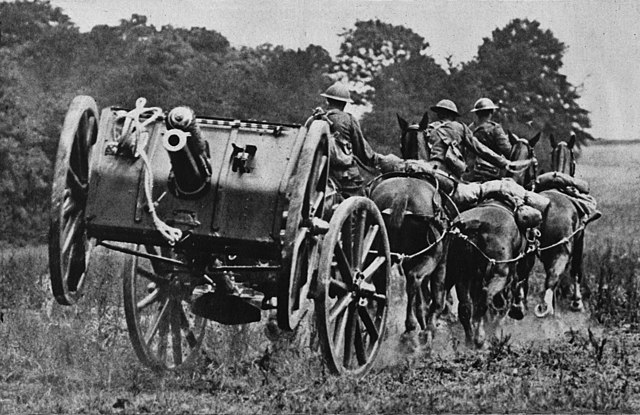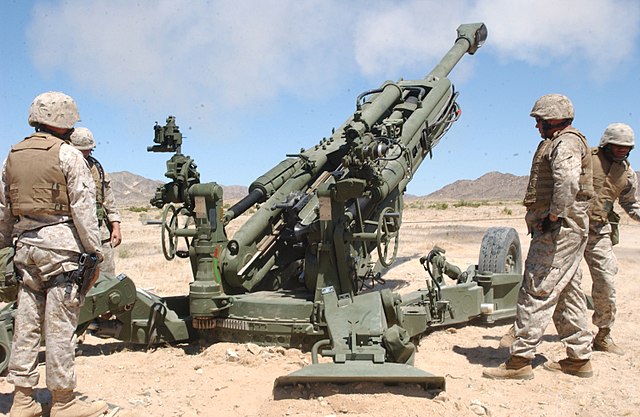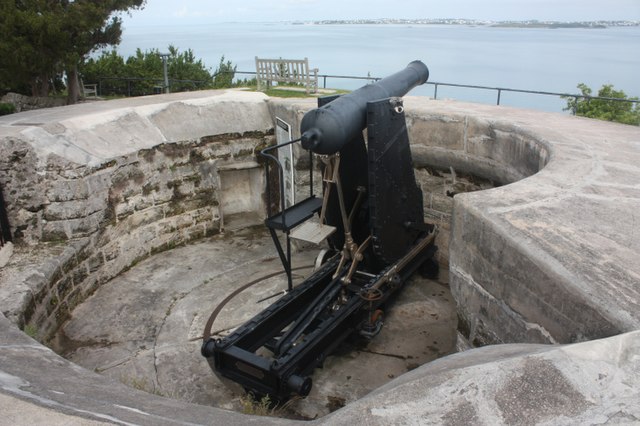Horse artillery was a type of light, fast-moving, and fast-firing artillery which provided highly mobile fire support, especially to cavalry units. Horse artillery units existed in armies in Europe, the Americas, and Asia, from the early 17th to the mid-20th century. A precursor of modern self-propelled artillery, it consisted of light cannons or howitzers attached to light but sturdy two-wheeled carriages called caissons or limbers, with the individual crewmen riding on horses. This was in contrast to the rest of the field artillery, which were also horse-drawn but whose gunners were normally transported seated on the gun carriage, wagons or limbers.
A lifesize model of a Swedish 1850s horse artillery team towing a light artillery piece, in the Swedish Army Museum, Stockholm.
A QF 13-pounder of the Royal Horse Artillery moving into position on the Western Front during World War I
French horse artilleryman of the Imperial Guard
Battery M, 2nd U.S. Horse Artillery, 1862. Photo by James F. Gibson. Library of Congress
Artillery are ranged weapons that launch munitions far beyond the range and power of infantry firearms. Early artillery development focused on the ability to breach defensive walls and fortifications during sieges, and led to heavy, fairly immobile siege engines. As technology improved, lighter, more mobile field artillery cannons developed for battlefield use. This development continues today; modern self-propelled artillery vehicles are highly mobile weapons of great versatility generally providing the largest share of an army's total firepower.
US Artillerymen fire-off an artillery round with the newly fielded M777 Lightweight 155-millimeter Howitzer
French soldiers in the Franco-Prussian War 1870–71
British 64 Pounder Rifled Muzzle-Loaded (RML) Gun on a Moncrieff disappearing mount, at Scaur Hill Fort, Bermuda. This is a part of a fixed battery, meant to protect against over-land attack and to serve as coastal artillery.
7-person gun crew firing a US M777 Light Towed Howitzer, War in Afghanistan, 2009








